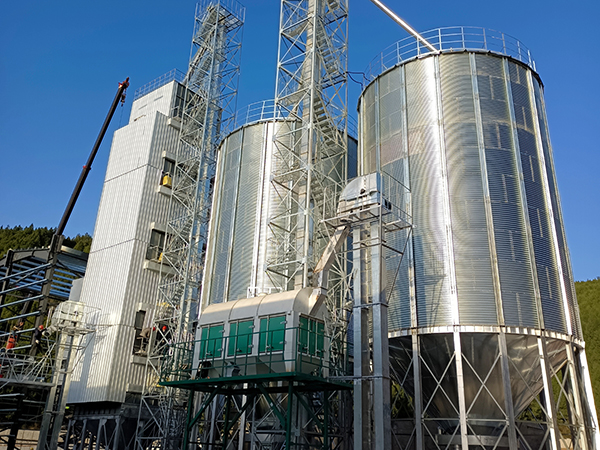Steel Silo Technology: Innovations in Bulk Storage Solutions
In the realm of bulk material storage, “steel plate silo technology” has emerged as a versatile and robust solution for various industries.
- Structure Composition of Wheat Silo in Uganda
- Main Advantages of Wheat Silo in Uganda
- Main Functions of Wheat Silo in Uganda
- Corn mill factory in Mali
- Maintenance Methods for Wheat Silo in Uganda
- Maintenance Methods for a Rice Silo in Uganda
- Wheat mill supplier in Malawi
- Installation Process of a Rice Silo in Uganda
- Structural Composition of a Rice Silo in Uganda
- Flour mill sale in Rwanda
- Main Advantages of Rice Silo in Uganda
- Primary Functions of Rice Silo in Uganda
Introduction: The Role of Steel Plate Silo Technology in Modern Storage
In the realm of bulk material storage, “steel silo technology” has emerged as a versatile and robust solution for various industries. The construction and operation of steel plate silos are underpinned by a set of specialized processes that ensure their efficiency, durability, and safety. This article will explore the intricacies of steel plate silos technology, its advantages, and the key considerations for its implementation.


The Essence of Steel Silo Technology
Understanding the core aspects of “steel plate silos technology” is fundamental to leveraging its full potential.
Material Selection
The choice of steel plate material is critical, with considerations for strength, corrosion resistance, and weight.
Design Precision
Precision in design ensures that the silo’s structure is optimized for the intended storage material and conditions.
Manufacturing Process
The manufacturing process of steel plate silos involves cutting, shaping, and assembling the steel plates with high accuracy.
Advantages of Implementing Steel Silo Technology
The adoption of “steel plate silos technology” comes with several benefits that cater to the needs of modern industries.
Flexibility in Design
Steel plate silos can be customized to various shapes and sizes, accommodating different storage requirements.
Durability and Longevity
The use of high-quality steel ensures that the silos are resistant to wear and can last for an extended period.
Environmental Protection
Steel plate silos can be coated or treated to provide protection against environmental factors, reducing the risk of contamination.


Key Considerations for Steel Silo Technology
When integrating “steel plate silos technology” into a storage solution, several factors must be carefully considered.
Load-bearing Capacity
The silo’s design must account for the maximum load it will bear, ensuring structural stability.
Access and Maintenance
Provision for easy access and maintenance is crucial for the operational efficiency and safety of the silo.
Automation and Control Systems
Incorporating automation and control systems can enhance the monitoring and management of the storage process.
Future Perspectives of Steel Silo Technology
As industries evolve, so does the “steel silos technology,” with ongoing advancements shaping its future.
Integration with IoT
The Internet of Things (IoT) can be harnessed to monitor and control steel plate silos remotely, enhancing operational efficiency.
Sustainable Development
Focusing on sustainable materials and construction methods can make steel plate silos technology more eco-friendly.
Innovation in Construction Techniques
Continuous innovation in construction techniques can lead to more efficient and cost-effective silo solutions.
Conclusion: Embracing the Potential of Steel Plate Silo Technology
The “steel silos technology” offers a range of benefits for bulk material storage, making it an indispensable part of modern industry. By understanding and implementing this technology effectively, companies can achieve greater storage efficiency and reliability.








